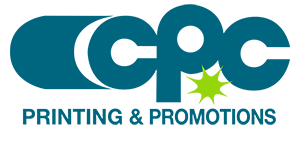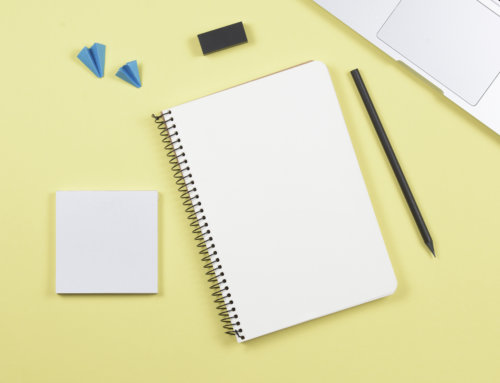Monday morning, 8:00 am
Salesperson: “We’re going to put an ad in the local tourism magazine. I want you to build one.”
You: “Sounds great! What are the specs for the ad?”
Salesperson: “We’re going to go with a half-page advertisement.”
You: “Super. Horizontal or vertical and what are the dimensions for that?”
Salesperson: “Well…half a page. Probably horizontal?”
You: “What format does the finished ad need to be?”
Salesperson: {blank look…crickets…}
You: “Can I have the name and number of the contact person at the magazine?”
If you don’t work in graphic design, all those pesky details regarding size, orientation and format don’t really blip on your radar. But for those of us in the design trenches every day, these are crucial pieces of information. In a super-duper, best-case scenario, you’d receive every last bit of pertinent data along with the ad request. In a best case scenario, you’d contact the advertising department at the magazine and be given all the essential facts. From there it would simply be a matter of following their guidelines and submitting the final ad in the correct format.
What if you aren’t lucky enough for a best-case scenario? What if you’re stuck in a this-is-real-life scenario? Don’t panic. You can still build a great ad, even if you have to make some educated guesses to do it.
Size:
Check online. Many publications have an advertising page. You may have to dig, but you can often find a list of various ad sizes. If that’s not available, get the size of the finished magazine. In a worst-case scenario, you can make an educated guess about the final ad size with simple math and common sense. You might be able to browse an online copy of the magazine which can help you see how ads are handled. For instance, do pages with full page ads still contain page numbers and slug lines that you will have to allow for in your design?
Orientation:
This information is essential. Even the most inventive and clever graphic designer won’t be able to design an ad that works for both a half-page horizontal and a half-page vertical placement. If this is truly unknown at the time you begin to design, you’re going to have to bite the bullet and build one of each.
To bleed or not to bleed:
This usually applies only to full-page ads since most publications leave space between smaller ads that appear on the same page. If you’re designing for a full page and bleeds are allowed, make sure they’re large enough. Don’t be skimpy, especially if you’re not absolutely certain of the finished size. The magazine may need to scale your ad and if that happens, you want to be sure there will still be plenty of bleed to meet the printer’s requirements. How much is enough? Most printers need a minimum .125 inch bleed. So make your bleed at least .25 inches, but keep in mind that it never really hurts to have more. Feel free to go crazy and include a .375 inch bleed! Too little bleed, though? That’s a problem.
Image area/margin:
Be bold and err on the side of caution. Don’t run your photos and copy right up to the edges of the ad space, especially on half-page and full-page ads. Give them a little breathing room. This allows for greater flexibility when the magazine places your ad. It’s tempting to use every little bit of your advertising real estate, but try to resist when you’re working with unconfirmed dimensions.
Borders:
Feel free to put a border on your ad if you are working with real measurements from the publication. Otherwise, if your estimated size is off even a little, unattractive things could happen to your ad. It could get enlarged or reduced disproportionately (gasp!) to fill the space, or placed as is and then be noticeably short one direction or the other.
Resolution:
The effective resolution for your images should be 300 dpi. If you build the ad in Photoshop and it contains text (this isn’t recommended), you need a minimum resolution of 600 dpi for your text to look clean and sharp. The smaller the text, the more critical the resolution. Be kind to yourself and build your ad in a page layout program if at all possible.
Color mode:
We’re talking about print ads, so CMYK is the way to go. If you provide an RGB ad it’s going to be converted to CMYK for printing, so you might as well take care of it at the design stage where you have full control over the color.
Black text:
Black text should be colored with standard black only. Not a 2-, 3-, or 4-color process black. It’s almost impossible to consistently register black copy that includes some of the other process colors. So the result is text that looks muddy rather than black, and is less crisp than black-only type. Beware Photoshop’s default black swatch, which is a 4-color mix! But, then, you weren’t going to use Photoshop for your text, anyway, were you?
Crop marks:
Crop marks are wonderful. Most of the time. They let the person who receives your ad know exactly what size you intend it to be. If you want to include them, go ahead, but don’t let them become a problem for your ad. Crop marks should never cut into the bleed because they diminish the usable part of the bleed when they do. So if you’ve built in a .375 inch bleed, make sure your crop marks are offset by at least that much. No bleed on your ad? Still make sure the marks are offset by a large amount. Again, if your guesstimation is off and you build the ad a little too small, you don’t want parts of the crop marks to show up in the live area of the printed publication.
Final format:
When you’re not sure, a Press Quality PDF will work in almost all instances. Make sure you distill at Press Quality. Sometimes people use different (lowerquality) settings because they want the ad to be small enough to email. It’s far better to provide your ad using a different method—via an FTP site or an online file-sharing program, for example—than to degrade it by forcing it to be small enough to be an email attachment. If you’re advertising, you obviously want to elicit a favorable response from the reader, so don’t make a low res PDF of your ad. As long as you’re working with good quality fonts and high-res images, the Press Quality setting will create an ad that should sail right through the entire layout and printing process.
Some last words:
Information and communication are key to creating an ad that makes a great first impression. Spend a little extra time on both before you start to design your ad. It could end up saving you a lot of time and preventing you from being disappointed later. The ultimate goal of this, as always, is to help you produce a final printed piece that meets or exceeds the expectations of you, our customer. If you have any questions about designing ads, don’t hesitate to contact us.


